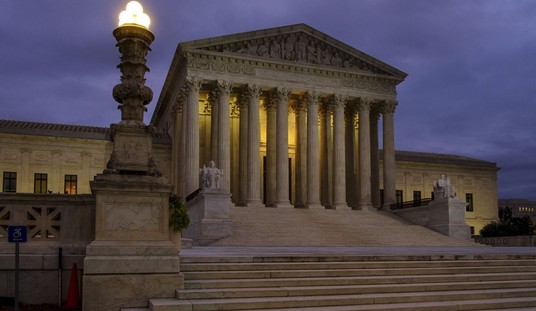You don't hear much about President Obama these days in the national news media because he isn't making very much news.
This is a presidency that appears to be winding down from an exhaustive and tumultuous three years of turmoil as the West Wing desperately focuses almost entirely on cooking up an attack campaign strategy to keep Obama from becoming another one term president.
Everything the president says and does from now on will be by political design to save his job and hope enough voters accept his blame-pointing excuses about why the economy remains lackluster and weak and unemployment is still unacceptably high.
Obama's low job approval poll numbers were, for some reason, slowly creeping into the middle-40s as he headed into January. But on Wednesday the Gallup Poll reported they plunged again to a low of 42 percent, a sudden drop of 4 points, while his job disapproval number shot up to 50 percent.
The seven operative words in Obama's explanation for his disappointing presidential performance is that "we are moving in the right direction." That isn't a policy position, but it's the best excuse he and his advisers can come up with for the time being.
But that's cold comfort for Americans who are suffering under his rhetorical placebos that he is still prescribing as a substitute for common sense tax cut policies that will get the economy growing again.
Three new shocking numbers tell us what life is like in the Obama economy.
The daily Gallup tracking poll reports this week that the national underemployment rate is 17.9 percent when you factor in long term unemployed Americans who have given up looking for work and people forced to take low-paying, part-time jobs when they need full time employment but can't find it.
The second tragic poll number is what Gallup calls its Life Evaluation question that basically asks, How are you doing? Forty-four percent of the people they polled said they were "struggling."
Recommended
These are the real misery numbers you won't hear on the nightly news shows or from Obama's press secretary Jay Carney at his daily news briefings. Or from Democrats in Congress.
The third poll Gallup tracks is its "satisfaction" question which regularly asks Americans, "In general, are you satisfied or dissatisfied with the way things are going in the United States at this time?"
A tiny 18 percent say they are satisfied with the way things are going in the country, which is up a bit, "but lower than at the outset of any recent presidential election year." Gallup says.
So the network news focus heading into the New Year, and so far this month, has been largely on the Republican presidential race and the White House has found it hard to compete with that story line, or to repel the Republican candidates' relentless attacks on Obama's presidency.
His latest legislative agenda is dead on Capitol Hill for the remainder of this year, except for his hope to extend the Social Security payroll tax cut through December.
But the payroll tax cut, which is pumping money back into strained paychecks, is not a substantive job creator because it doesn't unlock capital investment needed to create jobs. Nor is it a policy on which business can base long term expansion plans because it's only temporary.
So right now, such as it is, the payroll tax issue is the only life support Obama and the Democrats have going for them in this economy. But at some point soon it is going to expire and paychecks will be smaller.
There is no long term blueprint to accelerate economic growth.
No plan to open lucrative global trading markets for American exports.
No initiatives to unlock job-creating venture capital that's sitting on the sidelines in a state of investment paralysis because of uncertainty over Obama's plans to raise taxes in a weak economic environment. And no proposals to turn the energy spigot on wide open by boosting oil and gas exploration, drilling and production to bring down fuel prices.
Even some of the administration's very own economists are now admitting his policies have not adequately dealt with the anemic growth and employment crisis that grips our country in the third year of his presidency.
In an analysis of the Obama economy at the end of last month, Jared Bernstein, a former senior economic adviser, admits that "the unemployment rate is about where it was in the first half of 2009" in the midst of the recession.
Bernstein hopes the 8.6 percent unemployment rate will shrink a bit more this year, but confesses that he fears it would go up again if millions of discouraged workers who have dropped out of the workforce are drawn "back into the labor force."
"This problem -- the fact that people who've given up looking for work don't show up in the unemployment rate -- is not present in the employment rate: the share of the population working," Bernstein writes.
This is one of the dirty little secrets that is buried in the Bureau of Labor Statistics data: the nation's full labor force has been shrinking under Obama.
The number of people who are employed has "fallen over the past couple of years and has been basically flat-lining for a year. It's probably the most pessimistic labor market indicator out there, and is a reliable sign that labor demand remains weak," Bernstein says.
The White House never mentions this, nor the dismal fact that there are now nearly 2 million fewer jobs in our economy than when Obama became president.
Remember that 18 percent satisfaction number. If it stays low, Gallup says, Obama "could join Jimmy Carter and George H.W. Bush as one-term presidents denied a second term during a struggling economy."
























Join the conversation as a VIP Member